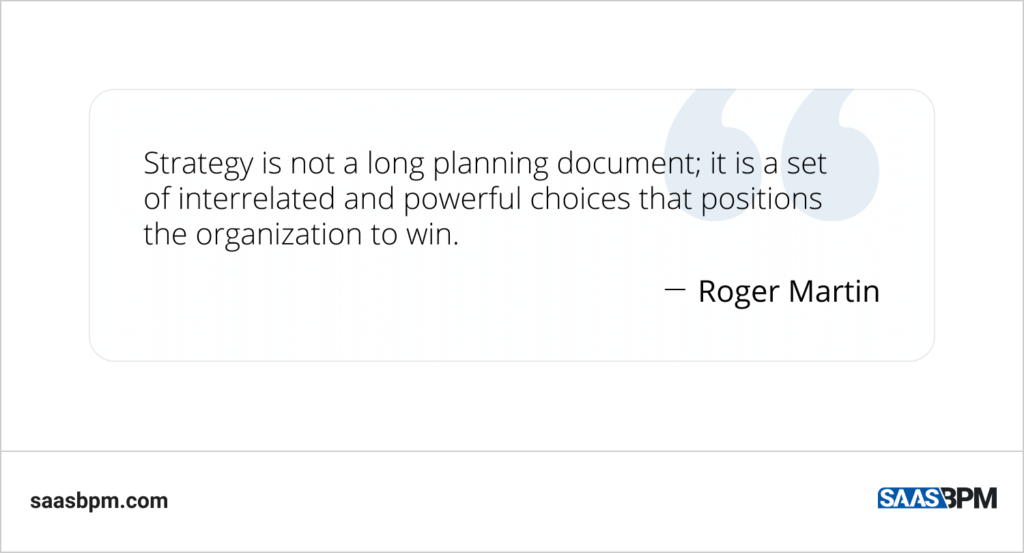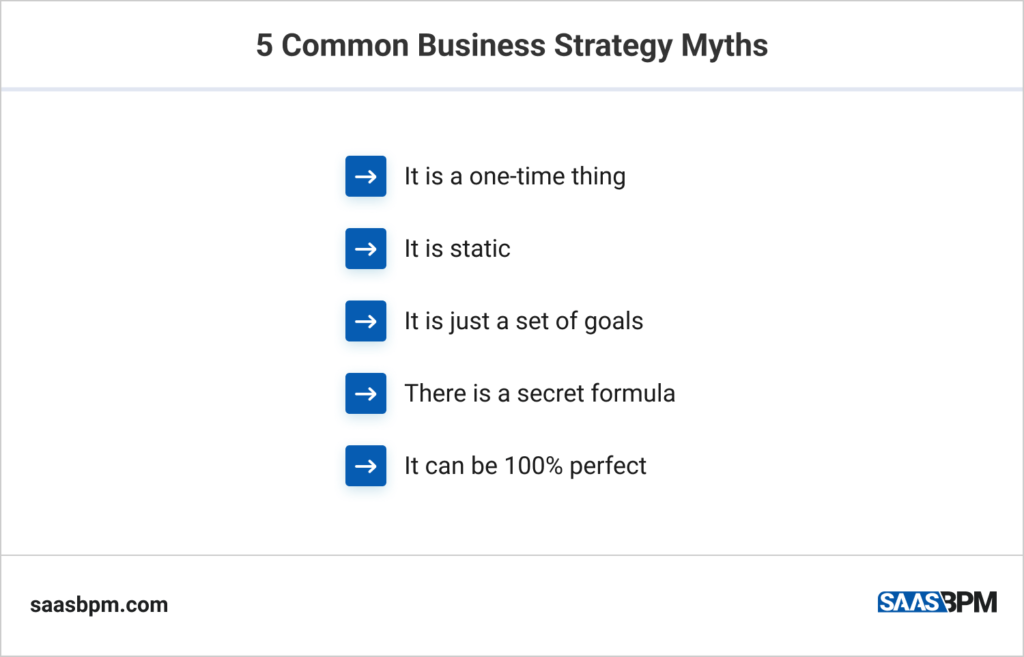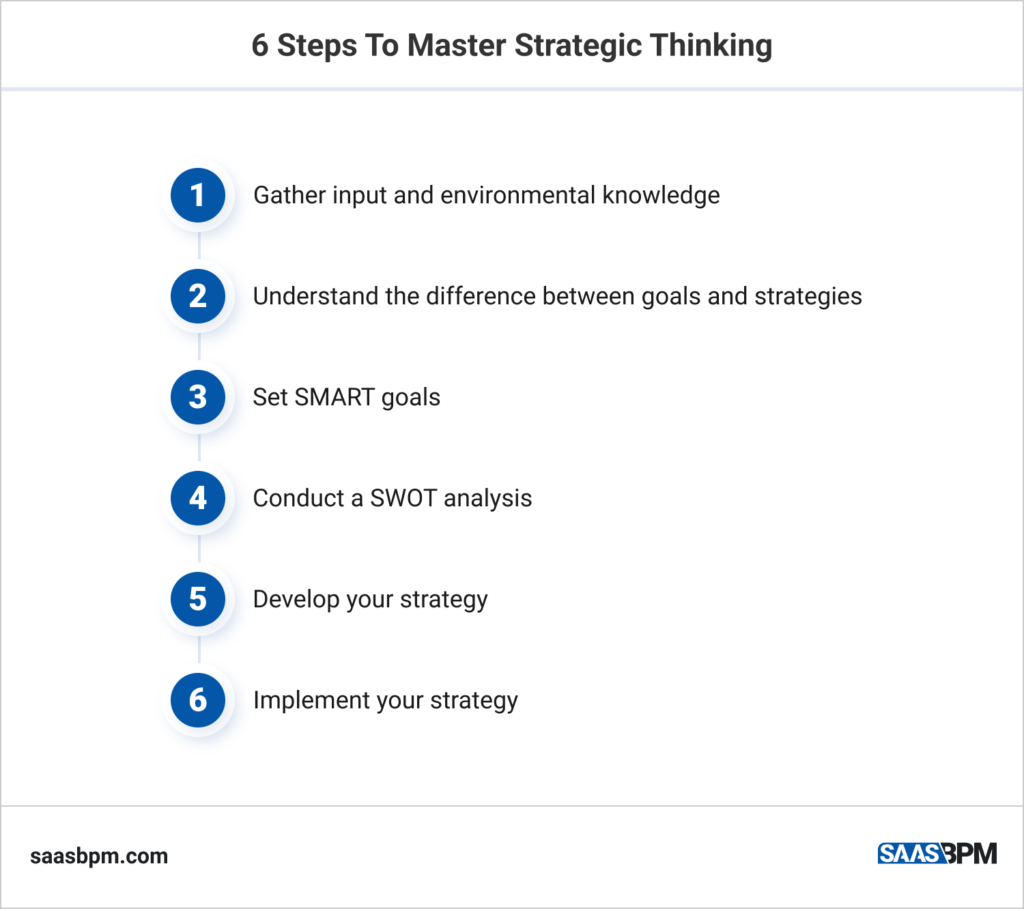Many entrepreneurs and founders, CEOs and their senior management believe that strategic thinking is essential but very complicated once you try to put all the factors together. With over 200 methodologies, one could literally spend a lifetime crafting a strategy and still risk going half-bonkers.
Well, this article will help those who are a little miffed by the idea of small business strategy, and make it as clear and as simple as it gets, at least in the context of management.
First, let’s talk about what a business strategy is and what it isn’t.
What Is Business Strategy?

Value creation is the heart of any business strategy. This means truly knowing your customer. Without a clear plan for creating value, a company will eventually fall behind its competitors who are able to better serve their clients’ needs. There are many different ways to create value, but all successful strategies must focus on knowing your customer and delivering what customers want.
However, value creation is not enough. You have to ensure that the value that was created is also captured. For instance, one might produce something that is, to your business, valued at $10,000. However, the individual’s willingness to pay for that might only be $5,000. Hence, there is a fundamental question of how else you can capture the remaining $5,000. This, in essence, is why you need strategic thinking.
Common Misconceptions About Business Strategy
It’s frustrating how difficult it is to find a good, solid definition of “business strategy”.
If you’ve ever listened to corporate banter, you probably are flicking your nose at the idea of crafting a strategy. In fact, many SaaS and startup companies growl at the idea of strategic thinking, as if only Fortune 1000 companies qualify to do it. What’s even more frustrating is that, even when you do find a definition, it’s often so convoluted and complicated that it’s practically impossible to understand.
Business Strategy is, by its very nature, strategic. That is to say, it’s a thinking process designed to help you develop and implement a strategy for your business. And because strategies are unique to each organization, there can’t be a one-size-fits-all definition.
Let’s look at Strategy according to Roger Martin.

Simply put, strategic thinking is a process that helps you develop creative solutions to problems and seize opportunities when they arise. In addition, while there is no single method or process for it, there are some common elements that all great strategic thinkers share.
Now, let’s talk about what Business strategy is NOT.

1. A Business Strategy is Not a One-Time Thing
A common misconception about business strategy is that it is something that you do once and then forget about. However, you can sell a product today and capture value but will this be the case tomorrow? How has the environment changed? Will you need to play differently in order to capture more value? A business strategy should be an ongoing process that you regularly revisit and adjust as needed.
2. A Business Strategy is Not a Static Document
Another myth about business strategy is that it is a static document. In truth, a business strategy should be a living document that evolves as you scale your business while it grows and changes. This is because there is a systemic interplay of different components in your business.
Employees determine the scale of your business. Keep in mind that government policies can affect your team. Your competencies as a leader influence your ability to manage, and your level of creativity could propose interesting offers to certain employees in spite of policies or legislation. One change shifts the delicate web.
3. A Business Strategy is Not a Set of Goals
While goals are an important part of any business strategy, they are not the be-all and end-all. A business strategy should also include actionable steps to achieve those goals. On a football pitch, scoring the goal is not the object. It is the way the players work together to overcome obstacles to the goal that matters.
4. A Business Strategy is Not a Secret Formula

There is no secret formula for success when it comes to business strategy and what works for one company may not work for another. The key is to find what works for your company and then adjust as needed.
5. A Business Strategy is Not a Silver Bullet
Finally, it’s important to understand that there is no such thing as a silver bullet when it comes to business strategy. There is no one perfect way to do things, and some risk will always be involved. The key is to minimize those risks and make sure you have a solid plan in place to adapt as needed.
Now that we’ve established just how important a business strategy is… let’s get to work.
How To Master Strategic Thinking in 6 Simple Steps

Gather Input and Environmental Knowledge
To make the best strategic decisions, it’s important to have a comprehensive understanding of the situation. Gather and assess all relevant information, like customer demographics, market trends and competitive environment.
Also, keep a pulse on the industry and customer needs. If you’re not familiar with the market, do research to understand the dynamics that shape it.
Creating a comprehensive list of all potential sources of feedback within and outside your industry, displaying them on a blank canvas, and considering their correlations might lead to the development of an actionable strategy when you experience an unexpected “aha moment”.
Understand the Difference Between Goals and Strategies
Once you’ve gathered enough industry insights and feedback, define your goals and strategies. Goals are the desired outcomes that you want to achieve, while strategies are the plans or methods that you will use to achieve those goals. For example, if your goal is to increase sales by 20%, your strategy might be to launch a new marketing campaign.
Set SMART Goals

Once you have a clear understanding of what you want to achieve, you need to set specific, measurable, achievable, relevant, and time-bound (SMART) goals. This will ensure that your goals are clear and attainable, and will help you to measure your progress along the way.
Conduct a SWOT Analysis
Before you can develop an effective strategy, you need to understand your strengths, weaknesses, opportunities, and threats (SWOT). A SWOT analysis is a tool that can be used to assess your company’s current situation and identify potential areas of improvement.
Develop Your Strategy
Once you have conducted a SWOT analysis and identified your goals, go ahead and develop your strategy. To do this, you will need to consider your resources, capabilities, and objectives. Once you have developed your strategy, it’s important to put it in writing so that it can be shared with others.
Implement Your Strategy
The final step is to implement your strategy. This involves putting the plan into action and making sure that everyone who needs to be involved is on board. To ensure that your strategy is implemented effectively, it’s important to set clear milestones and deadlines.
Conclusion
Look at McDonald’s. Their strategy is as clear as can be written on a piece of paper. You can literally observe what goes on in some of their kitchens as a customer. Although they haven’t changed their marketing approach in the past 10 years, they are still the dominant burger.
As you learn to craft your strategy, remain open to the input and environment because the changing times will be revealed in the testing of your offers. Apply strategic thinking in your business decisions on a regular basis, so that you will never be blindsided by the changes that happen, remain adaptable, and scale for success!
Author bio: Stuart Tan, MSc., MBA, is a consultant, executive coach, and organizational psychologist. He is an international speaker, having spoken to over 500,000 people worldwide across 11 different countries in his 28-year career, speaking to government bodies as well as multinational corporations and even small businesses. As co-founder of Super Scaling, his work focuses on the development of small business founders and their decision-making, thinking and leadership skills, including brand communication, team culture, strategy design, and alignment to operations.


